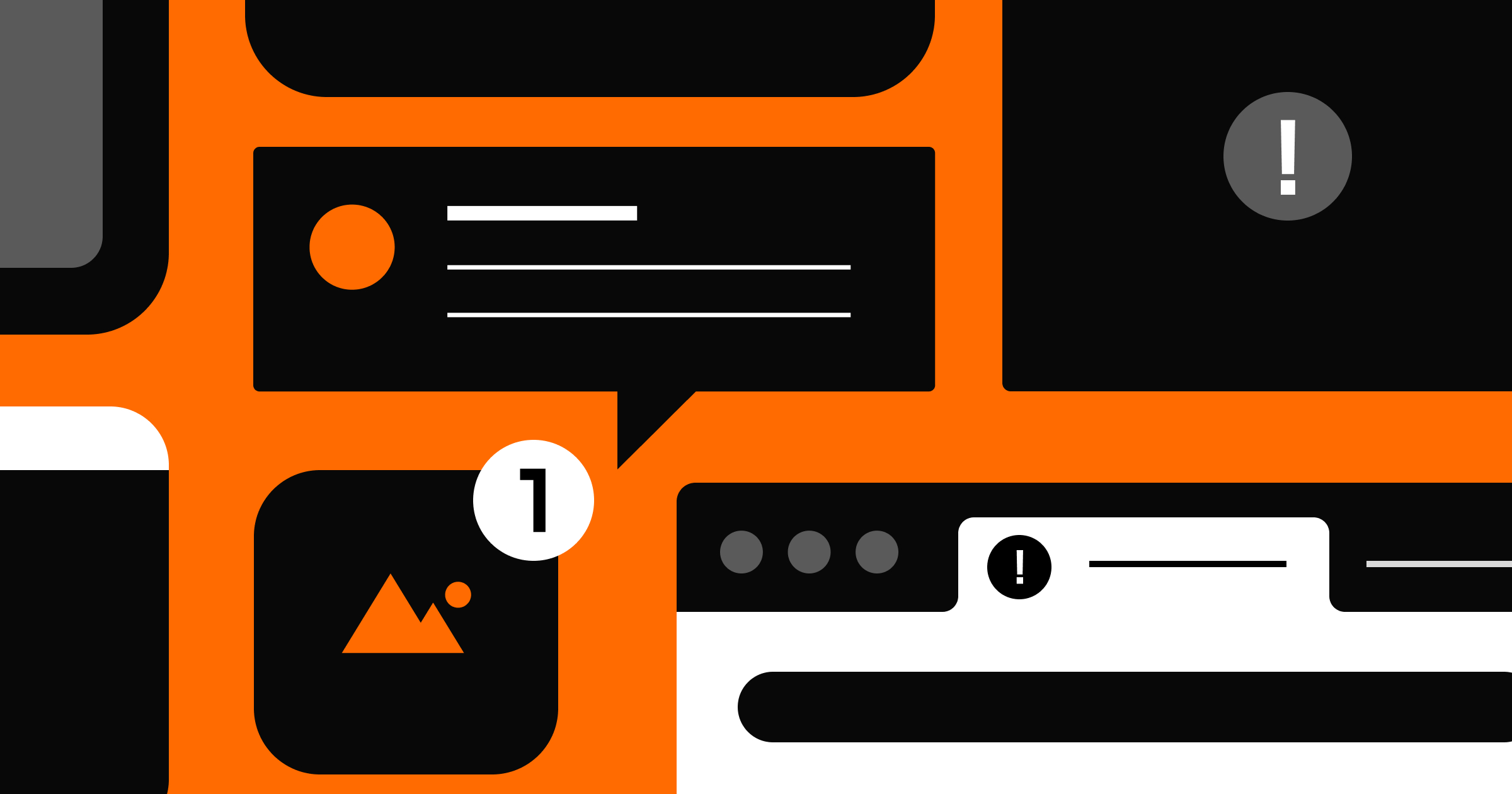Rapidly reach new heights with these growth hacking marketing strategies.
Rapid business growth requires strategy, not luck. With the right timing, growth hacking strategies enable you to quickly increase brand awareness and, in turn, business growth — even with limited resources.
Read on to discover what growth hacking is in marketing and how to find the right strategies to speed up your company’s growth.
What’s growth hacking in marketing?
Growth hacking focuses on rapidly expanding a company's customer base and revenue through innovative, cost-effective methods. It’s all about experimenting and thinking outside the box to attract prospects.
To effectively implement growth hacking strategies, you must have an existing framework, like predictive analytics or real-time data tools, for measuring results and making quick adjustments. This foundation allows you to pivot based on measurable outcomes and audience feedback, ensuring your strategies remain relevant and effective.
Hyper-growth might also result from viral marketing, where a sudden surge in clicks and shares attracts new customers. But this strategy is harder to plan for — it often does come down to timing or luck. However, these customers might not stick around long-term. For more sustainable growth, it's best to continuously experiment with different marketing tactics, learn from data, and scale approaches that work for you.
3 growth hacking examples
To better understand the concept, here are three real-world examples of growth hacking ideas from popular enterprises, each showing unique strategies that successfully drove engagement.
1. Dropbox’s referral program
What they did. The Dropbox team implemented a referral program that gave existing users extra storage space for every friend they invited to join the service. The referee also received free storage.
Why it worked. This growth hacking strategy turned every Dropbox user into a potential promoter. It took advantage of existing networks, dramatically lowering customer acquisition costs and quickly growing the user base. Plus, the simplicity of the offer — more space, something everyone values — made it effective and encouraged widespread participation. Dropbox’s registered users went from 100,000 to 4 million within 15 months.
2. Hotmail’s email signature
What they did. The team at Hotmail (now called Microsoft Outlook) added a signature at the bottom of every outgoing email that read “PS: I love you. Get your free email at Hotmail.”
Why it worked. This strategy used every email sent as a free advertisement for its service, expanding its visibility and reach at virtually no cost. The message spread organically and went viral, leading to quick scaling. It was simple and non-intrusive, and it turned every email into a growth opportunity. Hotmail acquired millions of users within months.
3. OnePlus’ invitation-only launch campaign
What they did. Chinese smartphone manufacturer OnePlus launched its first product, the OnePlus One, using an invite-only system where people could obtain invites through contests or an existing invitation owner.
Why it worked. OnePlus created exclusivity and demand around the smartphone while keeping production costs in check by controlling the supply. The invitation system encouraged sharing among tech enthusiasts, increasing the product's visibility and desirability without traditional advertising. This growth hacking technique was innovative and unconventional, helping OnePlus quickly establish a strong brand presence.
The role of “Agile” in growth hacking
The Agile method breaks projects into small, manageable tasks, continuously assesses progress, and pivots for a better outcome. In marketing, this approach allows you to quickly adjust your strategy based on real-time feedback and data.
You can use an Agile approach to create a structured yet adaptable framework for growth hacking. With cross-functional collaboration, rapid experimentation, and quick pivots based on data, it’ll be easier to capitalize on emerging opportunities.
Here are a few ways Agile contributes to growth hacking.
Iterative development
Agile teams focus on iterative development cycles so they can quickly create and test minimum viable products (MVPs) and marketing campaigns. This iterative approach helps them make constant improvements based on real-time issues and feedback.
For example, you might develop a physical MVP you’ll send to prospects, release it to a small testing group, gather feedback, and iteratively improve it before campaign launch.
Flexibility and adaptability
The Agile method allows room to quickly adjust to changing market conditions, feedback, and emerging growth opportunities. Making these adjustments can ensure your growth hacking strategy remains relevant.
For example, you can use real-time analytics to monitor behavior and market trends. If required, you can change your marketing campaign's messaging or target new customer segments without lengthy delays.
Cross-functional collaboration
Cross-functional collaboration is vital for large enterprises adopting an Agile approach. This collaboration means all teams are aware of their roles in a growth hacking campaign and no departments form separate silos. It also accommodates multiple perspectives simultaneously, which is essential when identifying issues or finding solutions. For instance, you can gather input from development, design, marketing, and sales teams when choosing a growth hacking strategy.
Data-driven decision-making
Agile teams prioritize data-driven decision-making, using A/B testing, target audience data, and user feedback to choose and tweak growth strategies.
For example, a B2B service provider might use two versions of a call-to-action (CTA) button on their landing page. If test results show that “A” results in more conversions, they’ll make it the preferred option going forward.
Focus on customer value
This methodology delivers value to target audiences and customers through incremental improvements and continued delivery. Growth hacking strategies will be more successful if you focus on your customer's immediate needs.
For example, a cybersecurity company might roll out new features based on user feedback to enhance their product's value proposition and retain customers. They might also prioritize account-based marketing strategies to strengthen relationships with their highest-value clients. These strong relationships could increase referrals and speed growth.
“Fail fast, learn fast” approach
Agile promotes a "fail fast, learn fast" mentality, encouraging experimentation and embracing failure as a learning opportunity. With growth hacking, you have leeway to think outside the box and drift from "safer" routes you'd typically take. If email marketing is your go-to method, for example, you might send physical swag to prospects to shake things up.



















Choose the right CMS for a scaling enterprise
Discover how the right CMS can allow teams to efficiently scale rich, complex content – all without writing code.
9 growth hacking techniques to try
Here are nine growth hacking tips you can incorporate into your marketing campaigns to experience speedier scaling.
1. Leverage referral marketing
Referral programs incentivize existing customers to invite new users, effectively turning current clients into a sales force promoting your product at a low cost.
For instance, a cloud storage provider might offer extra space for every successful referral, like Dropbox did. This offer encourages existing customers to spread the word while attracting new users through trusted recommendations.
Implement a tiered referral program where people can unlock increasing rewards as they refer more people. This strategy will drive more engagement and create a sense of competition, with interested users vying to climb the leaderboard.
2. Automate email marketing
Email marketing automation involves sending timely, personalized messages to different audience segments based on their actions. This approach creates a more targeted experience for each person and helps nurture leads through the sales funnel.
An online course provider might send a series of automated messages — personalized with each lead's first name — offering additional information or discounts on courses related to what users previously viewed.
You can also use behavioral triggers, like cart abandonment or browsing history, to send relevant and timely emails that encourage conversions. For example, a message like "Hey! We noticed you left something in your cart. Would you like to complete your purchase before stock runs out?" might instill a fear of missing out and incentivize the user to take action.
3. Optimize conversion rates
Conversion rate optimization requires changing your content marketing strategy or website to increase the percentage of visitors who complete a desired action, like making a purchase or signing up for a newsletter.
Use A/B testing on various elements to see which layout, copy, and CTAs drive the most conversions. You can also use heatmaps and session recordings to understand how test users interact with your website. With this data, you can make informed adjustments that improve the site's user experience and increase conversions.
4. Build and engage with a community
Creating a community around your brand can build loyalty and nurture advocates who promote your offering through positive word-of-mouth. Concentrating the buzz through online forums, social media groups, and interactive sessions like Q&As keeps the community engaged while expanding your audience.
Use social media platforms like LinkedIn and Instagram, or create a forum on your blog to encourage discussion. Not only can people share feedback and help troubleshoot issues, but you can provide tips and exclusive content to strengthen their commitment to your brand.
5. Collaborate with influencers
Working with influencers can help you tap into other follower bases and gain credibility through trusted figures’ endorsements. It's essential to look beyond the numbers and choose influencers whose audience and values align with your company's. You must also create mutually beneficial and authentic content so the partnership doesn't appear forced.
For example, you can partner with well-known, respected bloggers in your industry to write about emerging market trends, linking back to your company's products and services. Then, pair influencer marketing with other online advertising strategies like pay-per-click campaigns to reach more people.
6. Create a shareable asset
Develop a shareable asset on your website, such as a widget, interactive game, or quiz. These features engage visitors and encourage them to share the content with their network, generating buzz and driving traffic to your site.
A human resource software company might create a fun, interactive quiz about types of people in the workplace and their productivity styles, encouraging people to share their results on social media.
7. Offer exclusive beta access and waitlists
Generate a buzz by offering exclusive beta access to new features, services, and products. Create a waitlist, like OnePlus did, to build anticipation and provide early access to influencers or loyal customers who can spread the word.
For instance, a software company might offer early access to a brand-new, groundbreaking analytics feature. They could collaborate with influencers who release reviews a few days before launch. These testimonials act as social proof, with positive reviews building credibility and excitement around the upcoming full-scale release.
8. Try micro-moment targeting
Identify and target micro-moments — specific occurrences when people turn to their devices for quick answers. Use Google Trends to identify peak times for searches related to your field and schedule ads accordingly.
Reviewing search trends and behavioral data helps you tailor and thoughtfully schedule bite-sized content, allowing you to deliver highly relevant information to potential leads at the right moment. For example, a productivity app might send push notifications with time management tips during the morning commute or lunch breaks.
9. Use gamification tactics
Incorporate gamification into your website to make the user experience interactive and engaging. Offer badges, points, and tangible rewards for achieving milestones.
For example, an e-learning platform might implement a points system where participants can earn badges and rewards for completing courses. The platform can announce weekly or monthly winners on their website and give them free credits or related courses for their efforts.
Regularly add new gamification elements to keep people engaged and motivated to continue interacting with your site.
The right platform to grow your business
Growth hacking strategies aim to surprise and delight an audience, breaking through the noise to deliver personalized and effective marketing. Embracing Agile best practices ensures your campaigns always reflect the most accurate prospect data to improve marketing success.
To support your innovative growth marketing campaigns, you’ll need a compelling website that convinces visitors to take action. With Webflow, you can create visually appealing and search-engine-ready websites that help you scale your business.
Achieve a sustainable growth rate with the right website-building approach and create a loyal customer base today.

Webflow Enterprise
Trusted by over 300,000 of the world’s leading brands, Webflow Enterprise empowers your team to visually build, manage, and optimize sophisticated web experiences at scale — all backed by enterprise-grade security.































